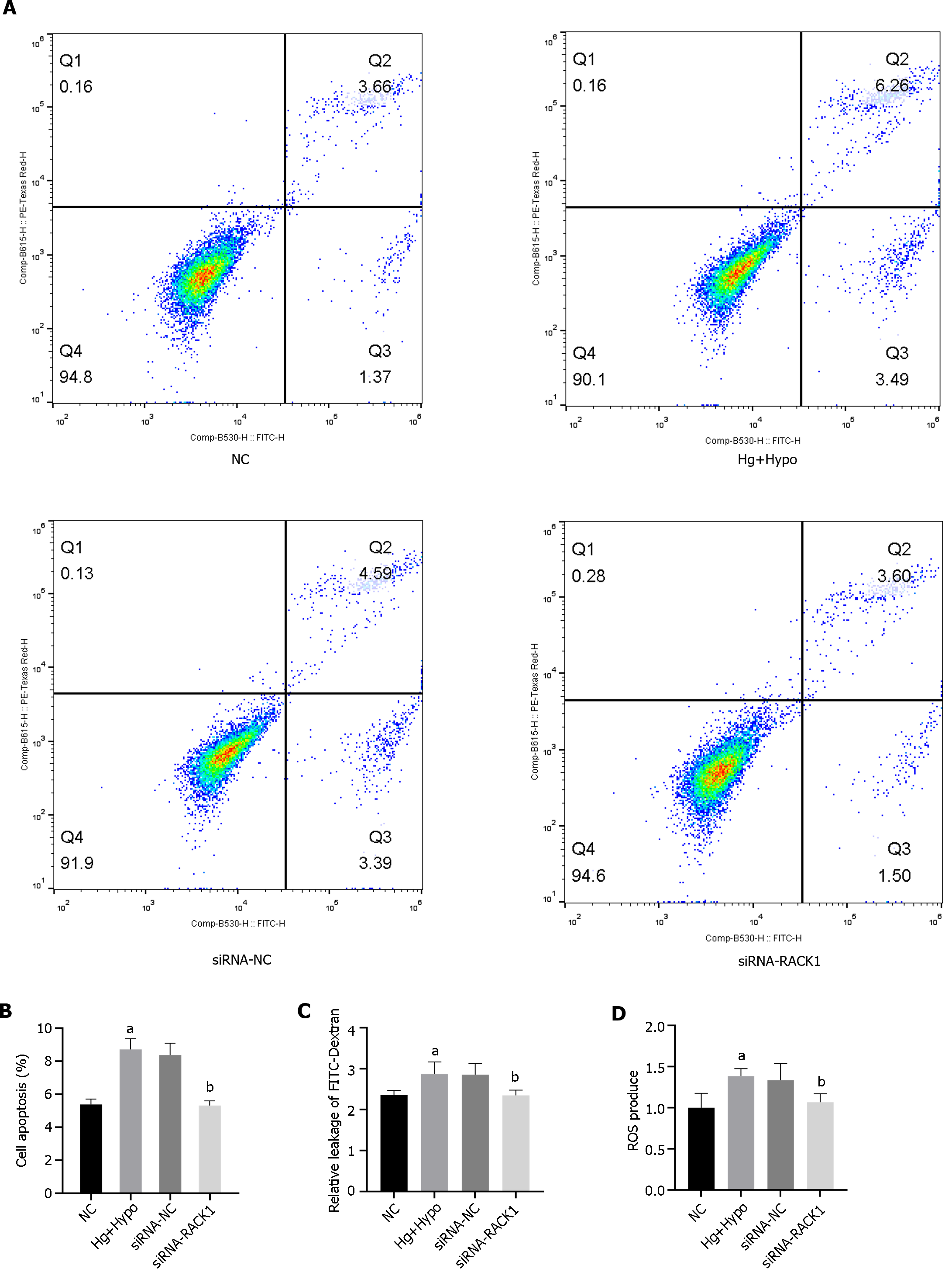Copyright
©The Author(s) 2024.
World J Diabetes. Mar 15, 2024; 15(3): 519-529
Published online Mar 15, 2024. doi: 10.4239/wjd.v15.i3.519
Published online Mar 15, 2024. doi: 10.4239/wjd.v15.i3.519
Figure 6 Silencing receptor for activated C kinase 1 inhibits reactive oxygen species elevation, apoptosis, and cell leakage in adult retinal pigment epithelium cell line-19 cell monolayers under high-glucose hypoxia.
A and B: The apoptosis rate of adult retinal pigment epithelium cell line-19 cells was measured in the normal control (NC), high glucose combined with hypoxia, non-silent siRNA-NC, and silenced receptor for activated protein kinase C1 siRNA groups under high glucose hypoxia; C: The FITC-dextran leakage level in the cells of each group, used to analyze the permeability between cell levels in monolayers; D: The reactive oxygen species (ROS) production level of ROS detection kit in the cells of each group. The results are expressed as the mean ± SD. aP < 0.05 vs normal control. bP < 0.05 vs siRNA-normal control. NC: Normal control; Hg + Hypo: High glucose combined with hypoxia; siRNA-NC: Non-silent siRNA; siRNA-RACK1: Silenced RACK1 siRNA; ROS: Reactive oxygen species; RACK1: Receptor for activated C kinase 1.
- Citation: Tan J, Xiao A, Yang L, Tao YL, Shao Y, Zhou Q. Diabetes and high-glucose could upregulate the expression of receptor for activated C kinase 1 in retina. World J Diabetes 2024; 15(3): 519-529
- URL: https://www.wjgnet.com/1948-9358/full/v15/i3/519.htm
- DOI: https://dx.doi.org/10.4239/wjd.v15.i3.519









